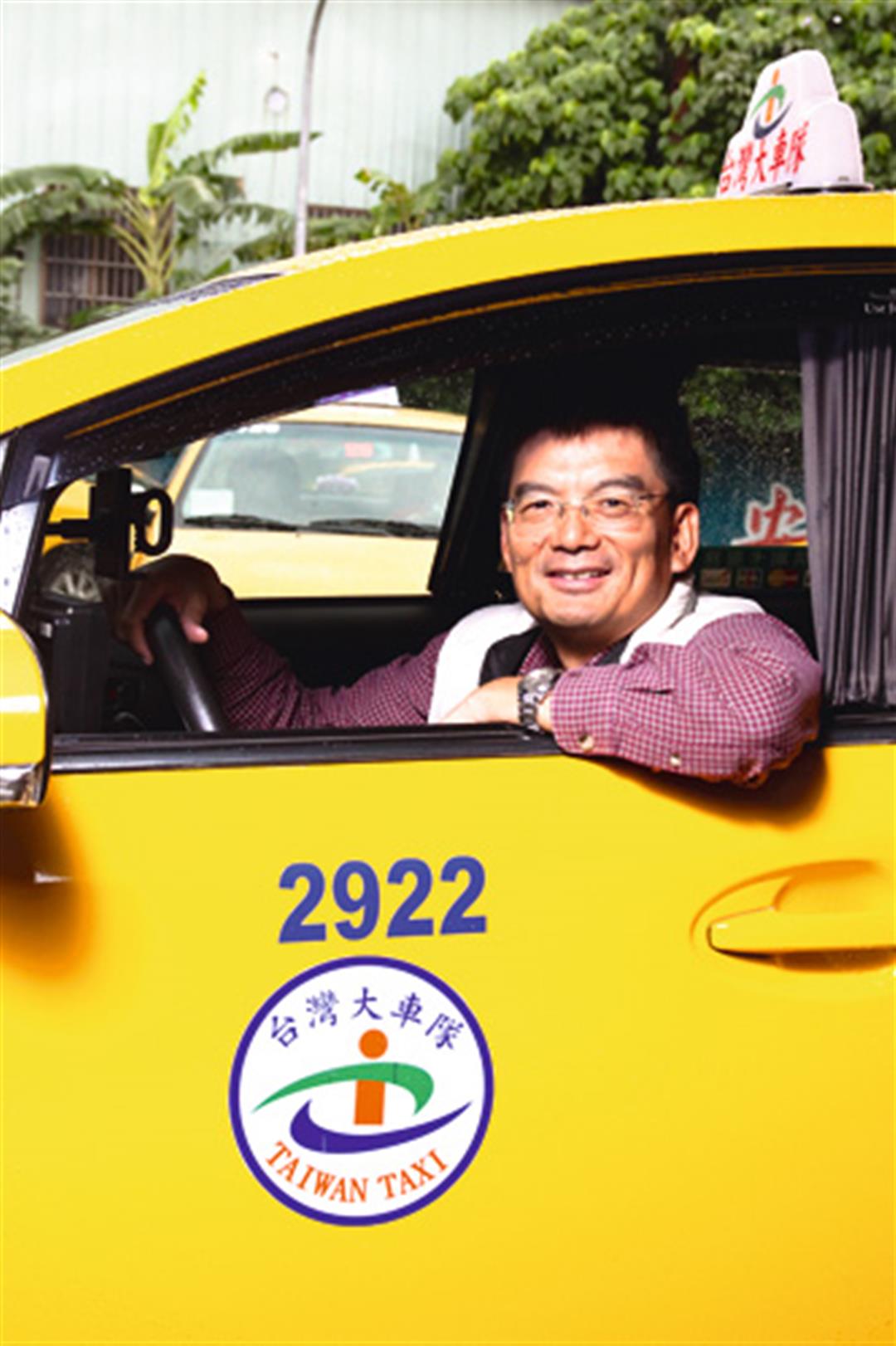
It’s not cool for taxi drivers to chew betel nut! Giving a bad first impression is not OK!
Fortunately, drivers rarely behave in such an unseemly manner these days. In fact, the service provided by Taipei’s cabbies was ranked seventh in the world in 2012.
The first-hand knowledge that a traveler gains of an unfamiliar city usually starts with taking a taxi.
According to a 2012 survey conducted by Hotels.com, based on seven criteria including cleanliness, safety, availability, and driver quality, Taiwan’s taxis trailed only those of London, New York, Tokyo, Shanghai, Bangkok, and Berlin.
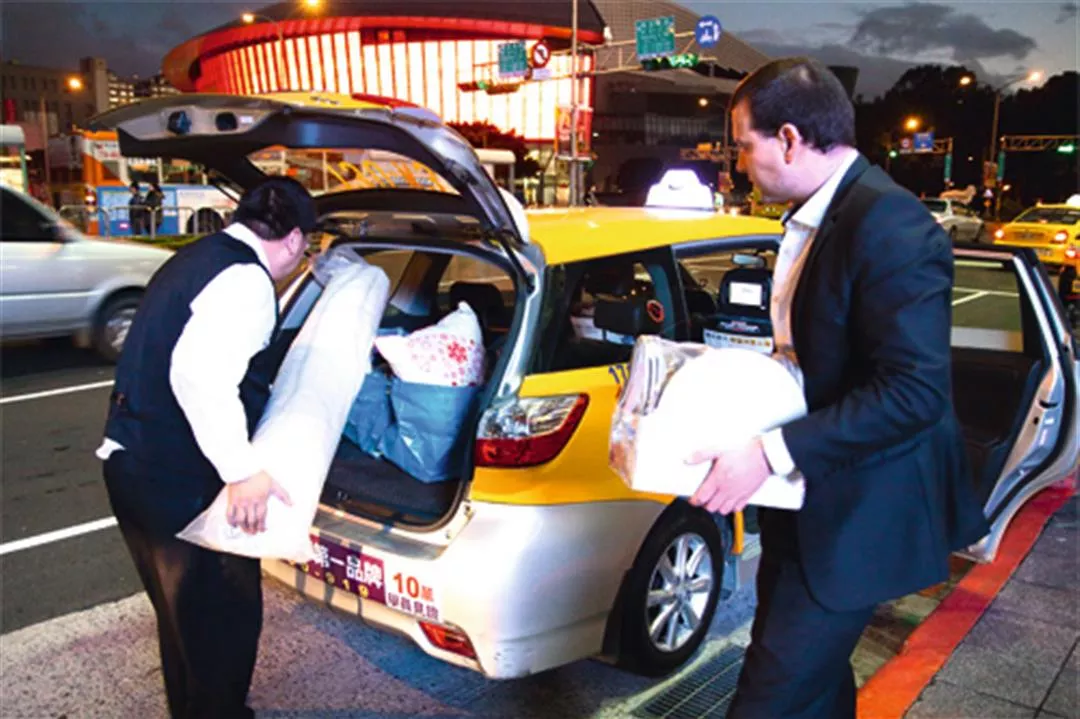
Taiwan’s taxis have successfully made the jump from mere transportation to service industry. The photo shows a cabbie taking the initiative to help a rider with bags acquired on a shopping spree.
Lee Chao-hsien of the Ministry of Transportation and Communications’ Department of Railways and Highways says that the chief factor driving the rise in quality is that drivers have been joining fleets and submitting to their rules and regulations.
According to the MOTC, at the end of 2011 the proportion of Taiwan’s cabbies belonging to fleets had risen to 37.7%, an increase of six percentage points over 2009.
Taiwan Taxi, the island’s largest fleet, has developed the most systematic approach to the tourist market. Its chairman Gary Lin has understood the potential for gaining market share by training drivers as tour guides in order to tap the demand for hired cars serving both Taiwanese and mainland Chinese tourists who aren’t part of package tours.
As well as working with online travel company ezTravel, Taiwan Taxi has been offering classes in English and Japanese to its more than 12,000 drivers. And in 2011 it began to encourage its drivers to get tour-guide licenses, at least for Chinese-language tours. The first priority has been to give them tourist information skills that they can offer to customers in Chinese.
Sam Huang, Taiwan Taxi’s senior manager of planning and marketing, explains that in 2011 49 of the fleet’s drivers took the tour-guide test and 19 passed. He Minxiong, a 32-year-old with 10 years of experience behind the wheel of a cab, obtained his license for Chinese-language tours in early 2012. Recently, he has been busy helping other drivers apply for the test and giving them pointers on how to prepare. He describes a palpable excitement in the two days before applications were accepted for the 2012 test, when more than 100 drivers were busily filling out forms.
Alba Chen, a manager with Taiwan Taxi subsidiary Taiwan Taxi Tour, says about 250 Taiwan Taxi drivers have qualified to join its tourism squad, either by obtaining tour-guide licenses or demonstrating sufficient skills in English or Japanese.
What are the advantages of being licensed? Not long ago, He Mingxiong drove a vacationing Hong Kong couple around Taiwan for four days. He served as both a driver and tour guide, giving them a deep understanding of sites that most tourists acquire only the most superficial understanding of. For instance, in Jiufen he arranged for a teashop proprietor to demonstrate how to best prepare high-quality mountain oolong tea and also brought them to a ceramics class to try their hand at pottery. The happy customers ended up tipping generously.
Gary Lin says that Taiwan Taxi regards itself as a league of taxi drivers, rather than an employer of them, and the league needs to find sources of income for its drivers. In an industry like this one that sells “moving experiences,” building a foundation of high-quality service is a must.
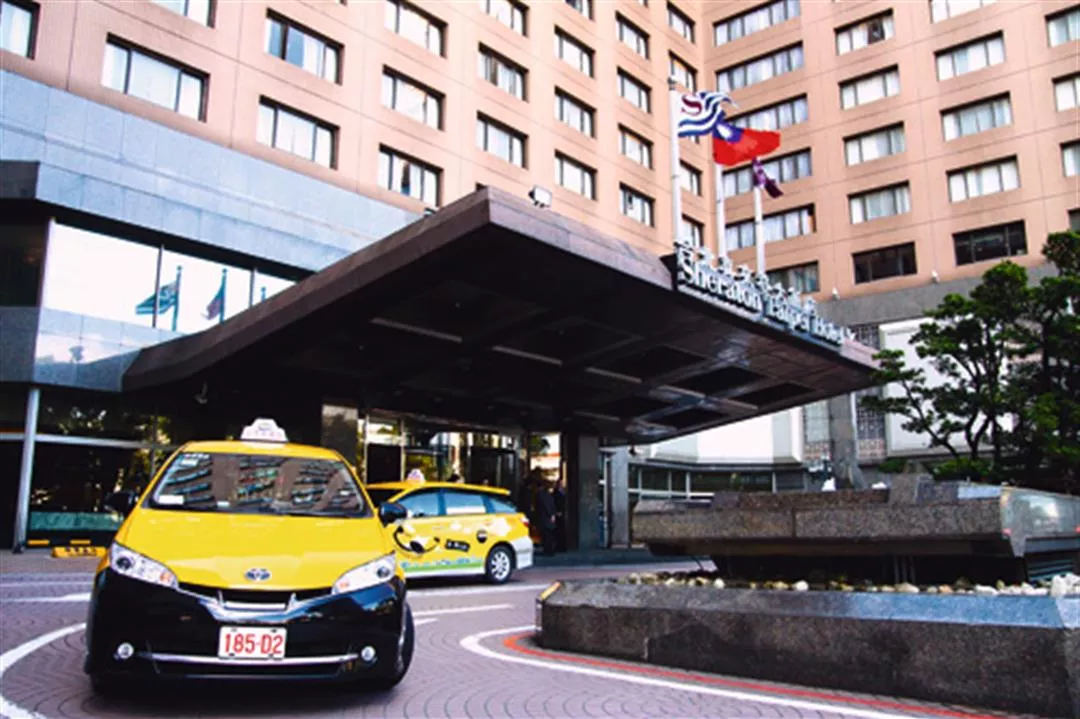
In a Hotels.com survey in 2012, Taipei’s taxis ranked seventh globally, based on cleanliness, comfort, service quality and other criteria. Taiwan Taxi has a special arrangement with the Taipei Sheraton to provide taxi services for travelers staying at the five-star hotel.
Li Tingyu has worked as an unaffiliated driver in Tainan’s Xinying District for 14 years. She grew interested in Japanese, and in 2003 began studying it independently, learning the Japanese kana scripts and basic conversational forms. In the years since, despite her limited language skills, she has taken every opportunity to ask those who look Japanese and in need of a cab if they do indeed need her assistance.
Her experiences driving a 70-year-old Japanese lady have provided some of the most unforgettable moments of her life. The old lady was born in Xinying, and three years ago she came to Tainan to explore her roots. On a friend’s recommendation, Li took on the job of driving her.
Although the two had difficulty communicating and often had to resort to writing Chinese characters (many of which are also used in Japanese), Li enthusiastically helped the woman find food and lodging and fill out the application to obtain a copy of her birth certificate. When the old woman, thanks to Li’s assistance, was finally able to see her family’s household registry documents from the Japanese era, she hugged Li and the Japanese friend that had accompanied her and burst into tears.
The next year the old lady returned to Xinying, and Li, wary of letting her stay in a hotel, put her up in her own guest room. They have become real friends, and on holidays, via a friend of Li’s who is fluent in Japanese, they write to each other to offer best wishes.
Li Tingyu says she appreciates the freedom cabbies enjoy and values the exchanges with customers even more. After driving a customer, whether a local or a Japanese, “I always look forward to the next time.”
In 2011, Li took a tourism training course for drivers sponsored by the Tainan City Tourism Bureau. She hoped to more fluently introduce Tainan’s sights to Japanese visitors.
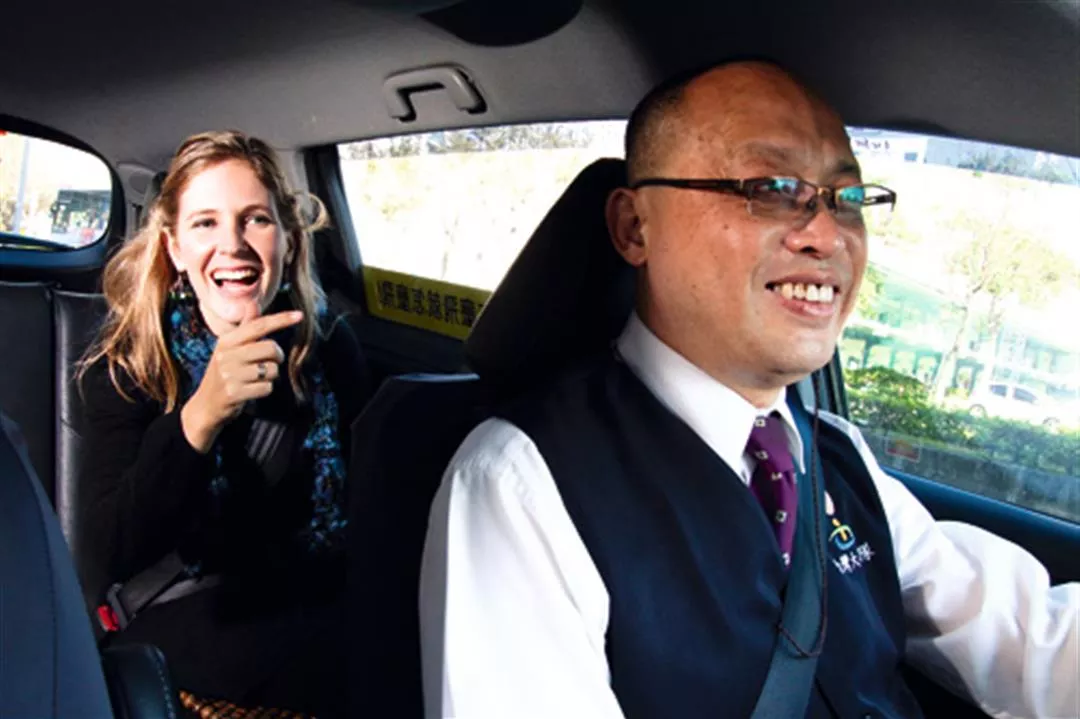
Taxis present the face of a city, and their drivers are the ideal ambassadors for shaping a city’s image.
According to MOTC surveys, the largest cohort of Taiwan’s drivers never received education beyond high school, and the next largest group never attended school beyond junior high. Combined, the two groups comprise more than 70% of all drivers. Those who attained degrees from junior college or higher don’t even make up 10%. But the fact is that some drivers have attained high levels of education and have even studied abroad.
Taiwan Taxi’s Chen Weirong, 54, has been driving a cab for four years. He graduated from Kinki University in Japan and spent 25 years working for a Japanese firm. His Japanese is so good that he can converse with Japanese customers about politics and other serious topics. Several times he’s startled Japanese riders, who have had the eerie sensation of having been transported back to Japan inside his cab.
Taiwan Taxi has asked Chen to clear some time to teach Japanese classes. He’s taught more than 100 students over the last two years. About 60 can now engage in five-minute conversations with Japanese riders.
William Yang, a Taiwan Taxi driver in his early 40s, just started to drive in Tainan City in June of 2012. Previously, he worked in a trading firm in South Africa for 17 years. A few years ago he returned to Taiwan to care for his elderly parents. His cross-cultural background and English language skills have earned the appreciation of a Dutch businessman, who now regularly commutes to work and back in Yang’s cab.
Yang says that this high-ranking executive is getting up in age, and when a colleague rides with him, he says very little. But when he rides alone, he talks volubly about the culture shock he has experienced in Taiwan: “He tells me I’m the first taxi driver he’s come across in Taiwan who can answer all his questions.”
Yang says that different countries have different taxi-driving cultures. When he picks up a Western rider, he automatically switches to a Western driving style, trying not to slam on the brakes and maintaining a greater distance from the car in front of his, so as to keep the customer at ease.
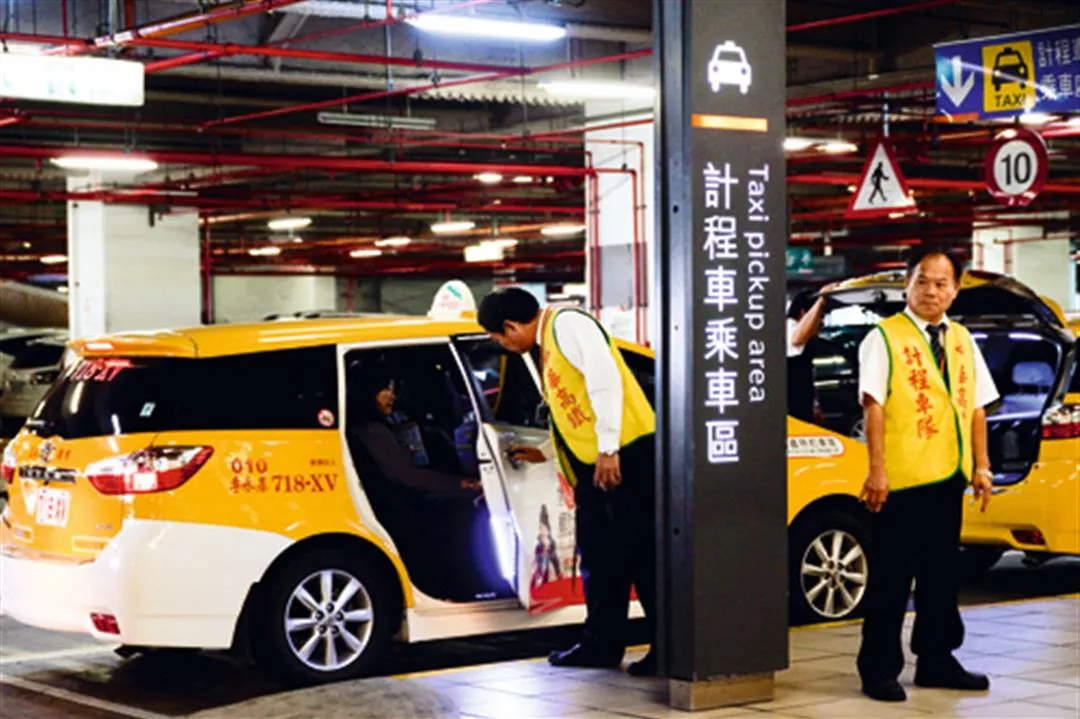
Great complements to mass transit systems, taxis, which pick people up and take them anywhere they want, are the urban passenger transporters with the highest degree of flexibility.
Taxi fleets have changed Taiwan’s taxi culture. On this subject, Lin Keming, a 25-year veteran driver, has some profound insights.
Cigarettes and betel nuts used to enter his mouth in a continuous cycle. After joining the fleet eight years ago, he immediately quit betel nuts, and now that he has to stop and leave his vehicle for a smoking break, his cigarette consumption has declined greatly as well.
“In a dress shirt, a suit vest and a tie, how could I chew betel nuts?” The clean and crisp driver’s uniform conveys a level of professionalism that has given Lin a new sense of identification with his career choice.
Having received only an elementary school education, he can’t speak a foreign language, and so hasn’t been able to join the tourism squad. But whenever he has the chance to pick up a foreign rider, Lin uses body language to provide the best service possible. Once when a Japanese woman had him wait at a teashop for half an hour, he wasn’t impatient at all—he didn’t want to adversely affect his rider’s pleasant shopping experience.
Yet Taiwan Taxi chairman Gary Lin admits that the fleet still comes up a “little bit short” in comparison to the service provided Japanese drivers in one respect: opening the door for their riders.
Even now that Taiwan Taxi’s fleet comprises 18 out of every 100 cabs on Taiwan’s streets, its drivers still come up short in that one respect. “I often tell them,” Lin says, “since you’re driving all day, why don’t you use getting out and opening the door for your riders as a way of getting exercise?”
Taxi fleets and their drivers have made a large contribution to raising the level of the taxi riding experience in Taiwan, but whether they can refine their service even further, so that passengers feel as if they were being driven by their own private driver, will depend upon progress being made in “the little ways” such as those cited by Lin. There is still room for improvement.

@List.jpg?w=522&h=410&mode=crop&format=webp&quality=80)




